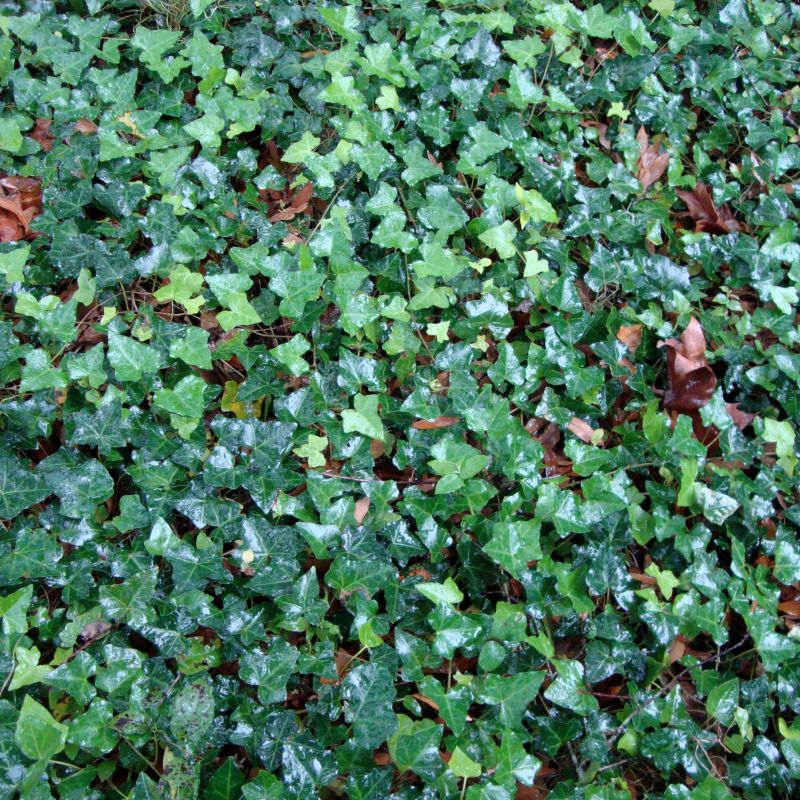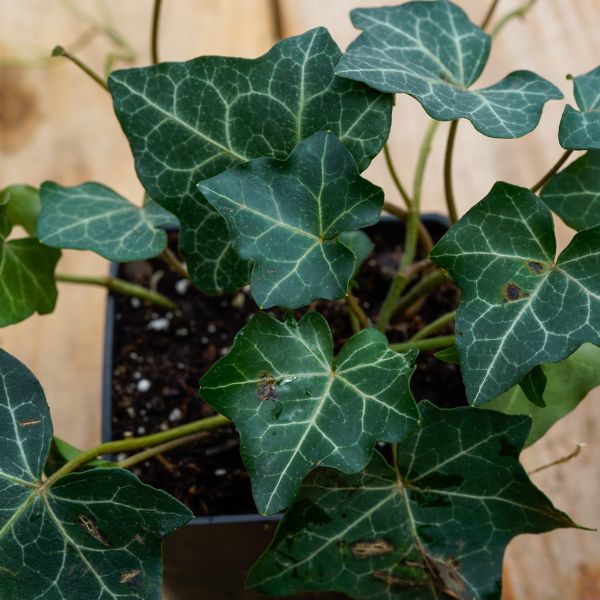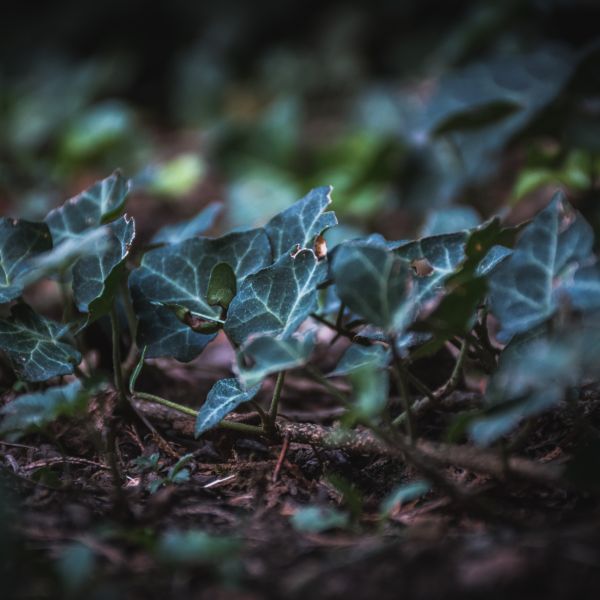


Thorndale English Ivy
Hedera helix 'Thorndale'
88 reviews
Thorndale English Ivy
Hedera helix 'Thorndale'
88 reviews
- Fast-growing and low-maintenance
- Provides excellent ground cover or cascading foliage
- Tolerant of various light conditions
- Recommended by landscape designers for optimal fit in real yards
$41.00
$59.00
30% Off
- Ships to in 3-5 Days
- Free Shipping Over $150
- Plant Arrival Guarantee
- In Stock
- Free Plant Consult
$200 - Landscape-Approved: Every Plant We Sell Comes With Design Expertise Behind It
1 Gallon
We are sorry, product is currently out of stock due to seasonal availability. Please check the "Related plants available in your area" section below
Not just beautiful - intentionally selected by ShrubHub's 3D landscape design team to fit real-world spaces and maximize yard potential.
Why Thorndale English Ivy?
Thorndale English Ivy (Hedera helix 'Thorndale') is a popular evergreen vine that is highly valued for its ornamental appeal and low maintenance requirements. Its attractive glossy, dark green leaves create a lovely backdrop for other plants and it can also be used in container plantings, hanging baskets, and as a ground cover. One of its main benefits is that it can tolerate a wide range of conditions, making it an excellent choice for both novice and experienced gardeners alike.
Sunlight
Thorndale English Ivy thrives in both partial shade and full shade conditions. While it can tolerate some sunlight, it generally prefers to grow in shaded areas and is better suited for areas with indirect light or dappled sunlight.
Watering
Thorndale English Ivy requires moderate watering. It prefers moist soil but should not be overwatered, as excessive water can lead to root rot. It is important to allow the soil to dry out slightly between waterings for optimal growth.
Fertilizing
Thorndale English Ivy requires a balanced fertilizer with a ratio of N-P-K (nitrogen-phosphorous-potassium) of 10-10-10.
Step into the verdant world of Thorndale English Ivy (Hedera helix 'Thorndale'), where greenery reigns supreme and elegance knows no bounds. This evergreen vine, a true plant virtuoso, weaves its emerald magic, entwining with walls, fences, and arbors like a botanical symphony.
Marvel at its leafy tapestry, a masterful composition of dark green foliage adorned with lustrous white veins, as if nature herself had brushed each leaf with an artist's touch. This Ivy diva knows how to steal the show with its captivating patterns and lush density.
Unfazed by sun or shade, the Thorndale English Ivy dances with equal grace in both light and shadow, embracing every corner of the garden with its tenacious spirit. Pest and disease resistance, is a bonus encore, ensuring a lifetime of enchantment without the need for constant attention.
A chameleon of beauty, this Ivy marvel can be a radiant ground cover or a climbing charmer, scaling walls with ease like a botanical acrobat. Its versatile talents transform unsightly spaces into breathtaking garden vistas while providing a green haven for fellow plants to flourish.
Fear not the art of pruning, as this Ivy maestro simply needs occasional trimmings to maintain its well-groomed allure. Just a snip here and there, and the stage remains set for an evergreen spectacle.
In your garden orchestra, let the Thorndale English Ivy take center stage, orchestrating a symphony of timeless elegance. Its lush performance, adaptability, and effortless allure will sweep you off your feet, turning your outdoor sanctuary into a green sanctuary of pure enchantment.
Plant Information:
| Botanical Name: | Hedera helix 'Thorndale' |
| USDA Zones: | 5 - 11 |
| Water: | Medium |
| Exposure: | Full Sun |
| Soil Needs: | Well Drained |
| Mature Height: | 12 - 15 feet |
| Mature Spread: | 6 - 8 inches |







Pollination Info
Pollination Information for Thorndale English Ivy (Hedera helix 'Thorndale')
Thorndale English Ivy (Hedera helix 'Thorndale') is pollinated by various species of bees such as honey bees, bumble bees, and other wild bees. They are attracted to the small greenish-yellow, five-petalled flowers that bloom in late summer and early fall.
The flowers produce nectar which bees collect and use as a food source. In the process, the bees transfer pollen from the male reproductive parts (anthers) of one flower to the female reproductive parts (stigma) of another flower, resulting in pollination.
Pollination is necessary for the plant to produce fruits and seeds. In the case of the Thorndale English Ivy, the fruits are small, black berries that are toxic to humans but are a source of food for birds.
Overall, pollination plays a vital role in the reproduction and survival of the Thorndale English Ivy and many other plant species.
FAQ
Thorndale English Ivy (Hedera helix 'Thorndale') FAQs
1. What is Thorndale English Ivy?
Thorndale English Ivy, also known as Hedera helix 'Thorndale', is an evergreen vine that is commonly used as a ground cover or climbing plant. It is native to most of Europe and western Asia and it can grow up to 50 feet tall.
2. What are the characteristics of Thorndale English Ivy?
Thorndale English Ivy has dark green, glossy, and leathery leaves that are about 2-4 inches long. It also has light yellow-green flowers that bloom in late summer and early fall.
3. What are the growing requirements of Thorndale English Ivy?
Thorndale English Ivy prefers partial to full shade, but it can also tolerate some sun. It needs a well-draining soil with a pH of 6.0-7.8. It is also important to ensure that the soil is kept consistently moist but not waterlogged. It can be propagated through stem cuttings or division of roots during the spring or autumn season.
4. What are the benefits of Thorndale English Ivy?
Thorndale English Ivy has numerous benefits, including:
- it provides an excellent ground cover that can suppress weeds
- it can help reduce air pollution by absorbing toxins such as formaldehyde, benzene, and trichloroethylene
- it can act as a natural insulation by covering walls and reducing heat loss in winter and reducing heat gain in summer
- it can provide habitat and food for wildlife such as birds and insects
5. Are there any drawbacks of Thorndale English Ivy?
Thorndale English Ivy can become invasive if not managed properly. It can climb up trees and other structures, which can cause damage over time. It is important to regularly prune and monitor the growth of Thorndale English Ivy to prevent it from becoming too aggressive.
6. Can Thorndale English Ivy be grown indoors?
Yes, Thorndale English Ivy can be grown indoors as a houseplant. It prefers a bright, indirect light and should be watered when the top inch of soil feels dry to the touch. It should also be fertilized regularly during the growing season with a balanced fertilizer.
7. How does Thorndale English Ivy compare to other types of ivy?
Thorndale English Ivy is one of the most popular and commonly grown ivy species. It has a more compact growth habit than other ivy species and it is more tolerant of sun. However, it is not as cold hardy as other ivy species such as Boston Ivy (Parthenocissus tricuspidata).
Planting & Care
Planting & Care for Thorndale English Ivy (Hedera helix 'Thorndale')
Planting:
- Choose a location that receives partial to full shade.
- Ensure the soil is well-draining and has a slightly acidic to neutral pH level.
- Dig a hole that is twice as wide and as deep as the root ball.
- Place the plant in the hole and backfill with soil, gently firming it around the base.
- Water thoroughly.
Care:
- Water regularly, especially during hot, dry weather.
- Mulch around the base of the plant to retain moisture and suppress weeds.
- Fertilize once a month during the growing season with a balanced fertilizer.
- Prune as needed to control the plant's growth and shape.
- Monitor for pests such as spider mites, scale insects, and aphids and treat promptly if necessary.
Check Out These Verified Customer Reviews:
Customer Reviews
4.7 out of 5 based on 88 reviews
Thank you! Your review has been submitted.
I love how vibrant and full the Ivy looks. Definitely recommend this shop!
Impressed with the quality of the Ivy. Will be buying from this seller again.
Beautiful ivy plant, looks great on my wall
Item has been added to your cart.


